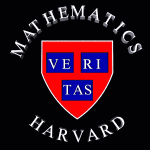Postmodern
Postmortem
“I had a lot of fun with this audacious and exasperating book. … [which] looks more than a little like Greil Marcus’s Lipstick Traces, a ‘secret history’ tracing punk rock through May 1968….”
— Michael Harris, Institut de Mathématiques de Jussieu, Université Paris 7, review of Mathematics and the Roots of Postmodern Thought, by Vladimir Tasic, Notices of the American Mathematical Society, August 2003
For some observations on the transgressive predecessors of punk rock, see my entry Funeral March of July 26, 2003 (the last conscious day in the life of actress Marie Trintignant — see below), which contains the following:
“Sky is high and so am I,
If you’re a viper — a vi-paah.”
— The Day of the Locust,
by Nathanael West (1939)
As I noted in another another July 26 entry, the disease of postmodernism has, it seems, now infected mathematics. For some recent outbreaks of infection in physics, see the works referred to below.
“Postmodern Fields of Physics: In his book The Dreams of Reason, H. R. Pagels focuses on the science of complexity as the most outstanding new discipline emerging in recent years….”
— “The Semiotics of ‘Postmodern’ Physics,” by Hans J. Pirner, in Symbol and Physical Knowledge: The Conceptual Structure of Physics, ed. by M. Ferrari and I.-O. Stamatescu, Springer Verlag, August 2001
For a critical look at Pagels’s work, see Midsummer Eve’s Dream. For a less critical look, see The Marriage of Science and Mysticism. Pagels’s book on the so-called “science of complexity” was published in June 1988. For more recent bullshit on complexity, see
The Critical Idiom of Postmodernity and Its Contributions to an Understanding of Complexity, by Matthew Abraham, 2000,
which describes a book on complexity theory that, besides pronouncements about physics, also provides what “could very well be called a ‘postmodern ethic.’ “
The book reviewed is Paul Cilliers’s Complexity and Postmodernism: Understanding Complex Systems.
A search for related material on Cilliers yields the following:
|
Janis Joplin, Postmodernist
” …’all’ is ‘one,’ … the time is ‘now’ and … ‘tomorrow never happens,’ …. as Janis Joplin says, ‘it’s all the same fucking day.’
It appears that ‘time,’ … the linear, independent notion of ‘time’ that our culture embraces, is an artifact of our abstract thinking …
The problem is that ‘tomorrow never happens’ …. Aboriginal traditionalists are well aware of this topological paradox and so was Janis Joplin. Her use of the expletive in this context is therefore easy to understand … love is never having to say ‘tomorrow.’ “
— Web page citing Paul Cilliers
|
“That’s the dumbest thing I ever heard.”
— Ryan O’Neal in “What’s Up, Doc?”
A more realistic look at postmodernism in action is provided by the following news story:
| Brutal Death of an Actress Is France’s Summertime Drama
By JOHN TAGLIABUE
The actress, Marie Trintignant, died Friday [Aug. 1, 2003] in a Paris hospital, with severe head and face injuries. Her rock star companion, Bertrand Cantat, is confined to a prison hospital….
According to news reports, Ms. Trintignant and Mr. Cantat argued violently in their hotel room in Vilnius in the early hours of [Sunday] July 27 at the end of a night spent eating and drinking….
In coming months, two films starring Ms. Trintignant are scheduled to debut, including “Janis and John” by the director Samuel Benchetrit, her estranged husband and the father of two of her four children. In it, Ms. Trintignant plays Janis Joplin.
— New York Times of Aug. 5, 2003
|
” ‘…as a matter of fact, as we discover all the time, tomorrow never happens, man. It’s all the same f…n’ day, man!’ –Janis Joplin, at live performance in Calgary on 4th July 1970 – exactly four months before her death. (apologies for censoring her exact words which can be heard on the ‘Janis Joplin in Concert’ CD)”
— Janis Joplin at FamousTexans.com
All of the above fits in rather nicely with the view of science and scientists in the C. S. Lewis classic That Hideous Strength, which I strongly recommend.
For those few who both abhor postmodernism and regard the American Mathematical Society Notices

as a sort of “holy place” of Platonism, I recommend a biblical reading–
Matthew 24:15, CEV:
“Someday you will see that Horrible Thing in the holy place….”
See also Logos and Logic for more sophisticated religious remarks, by Simone Weil, whose brother, mathematician André Weil, died five years ago today.


















 Red Dragon
Red Dragon